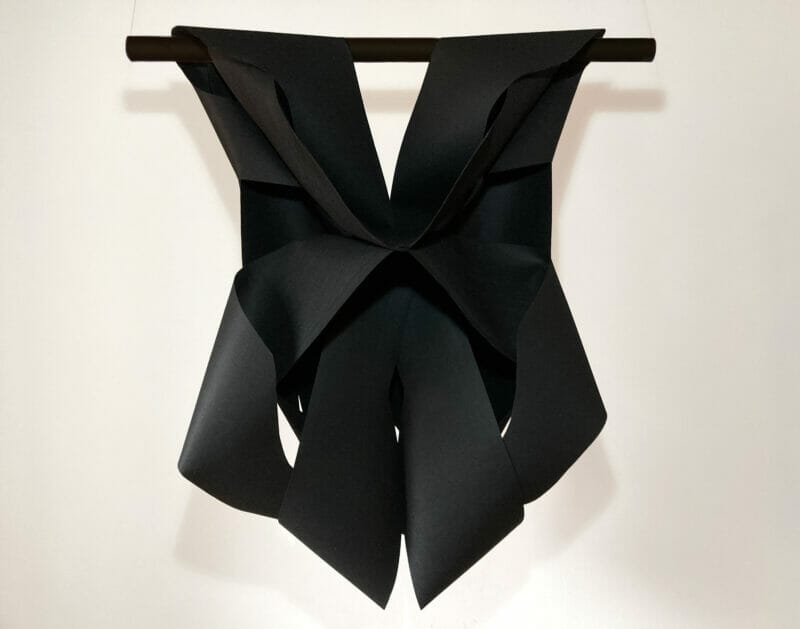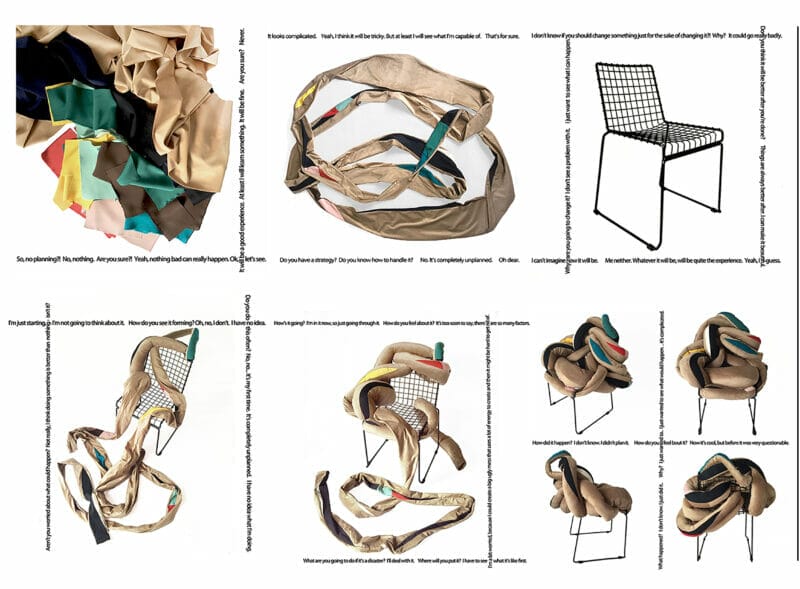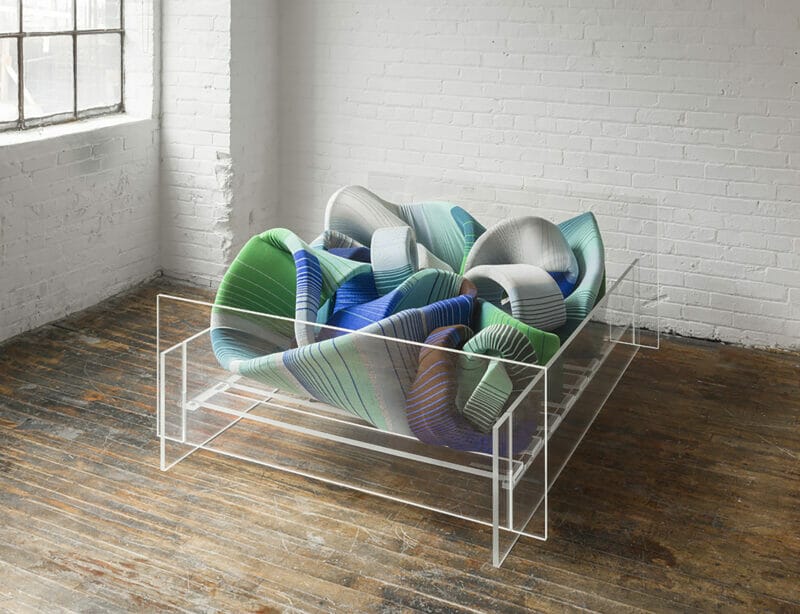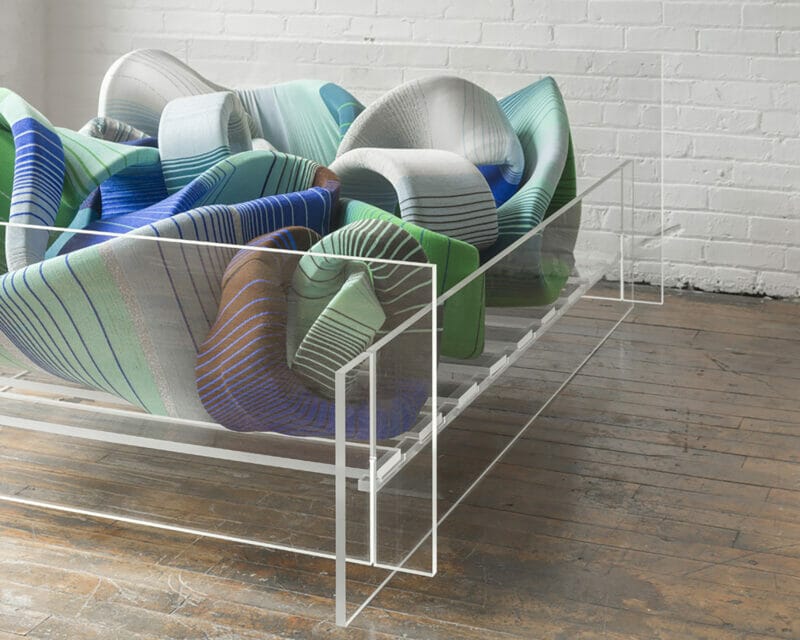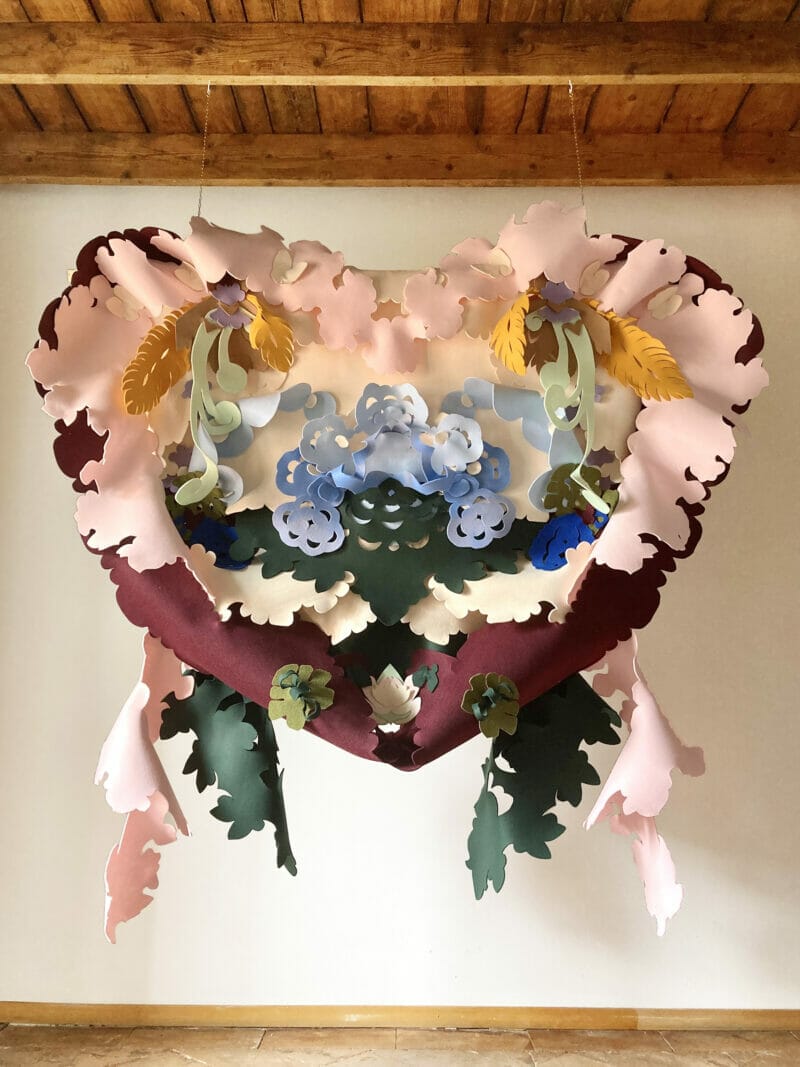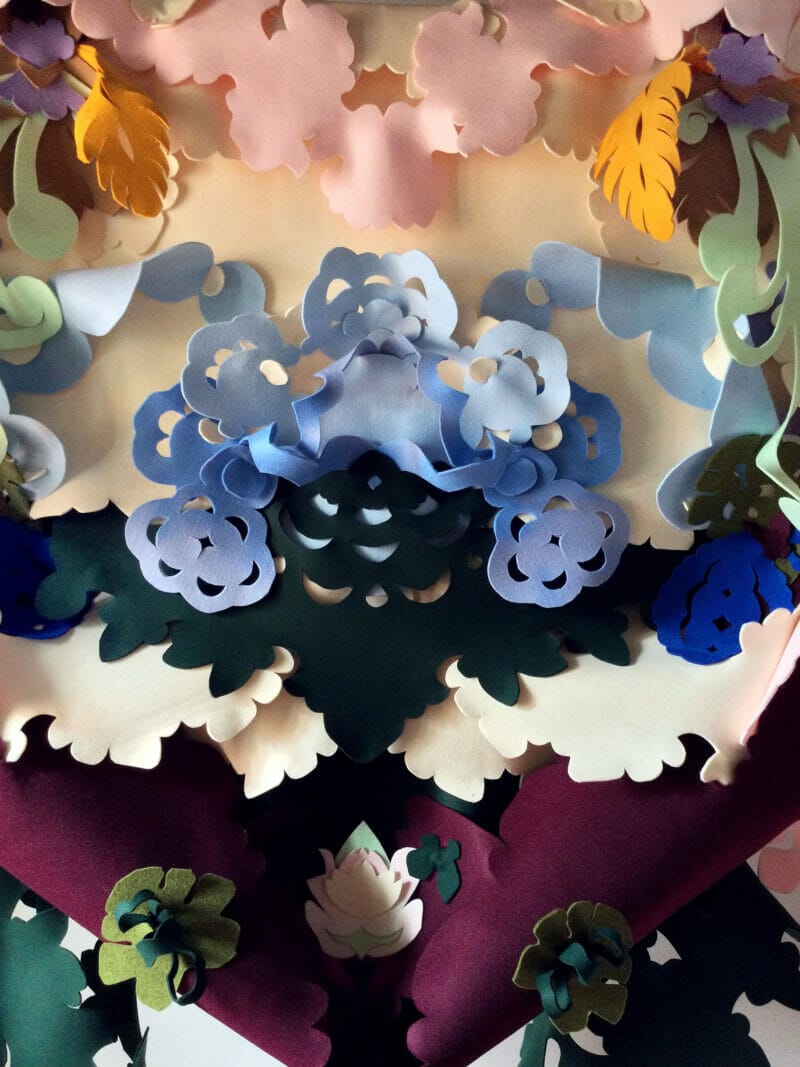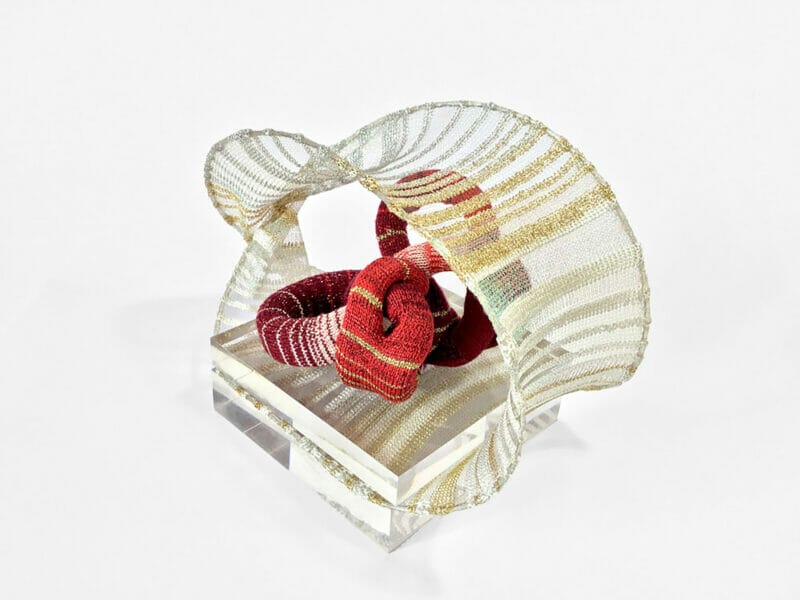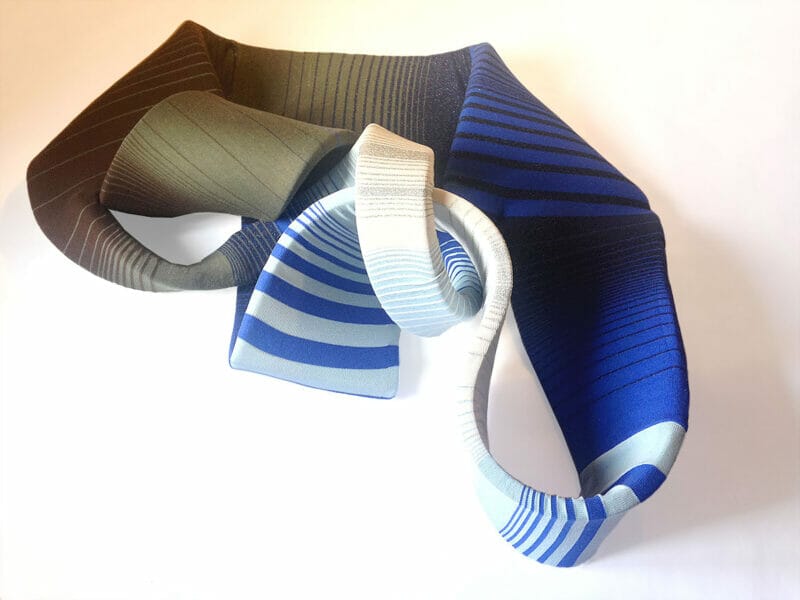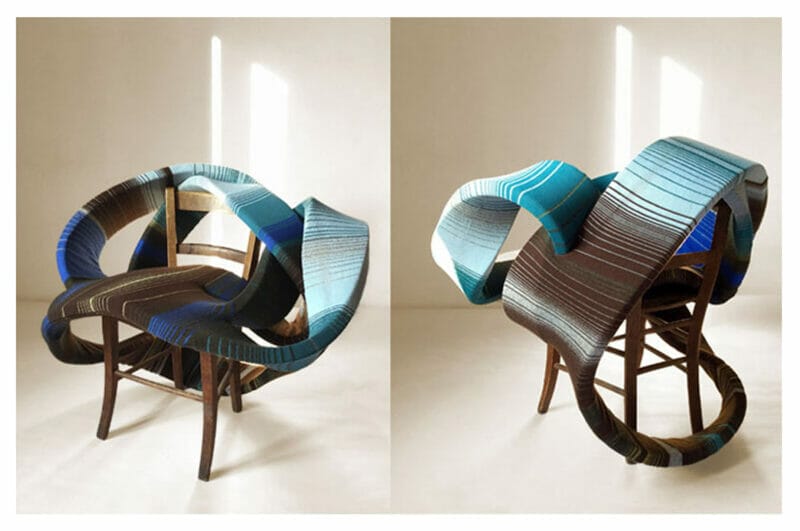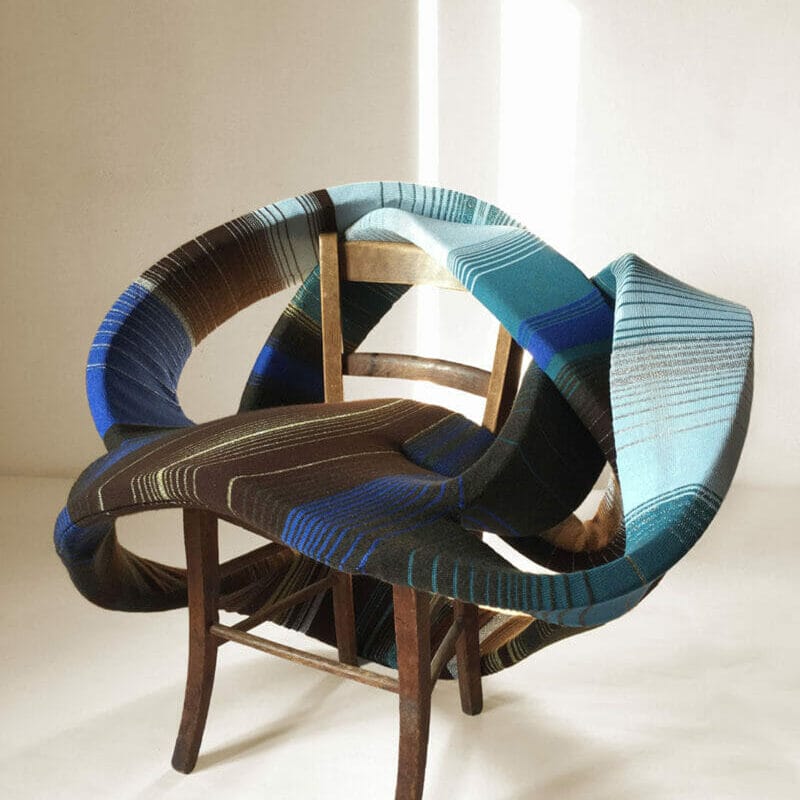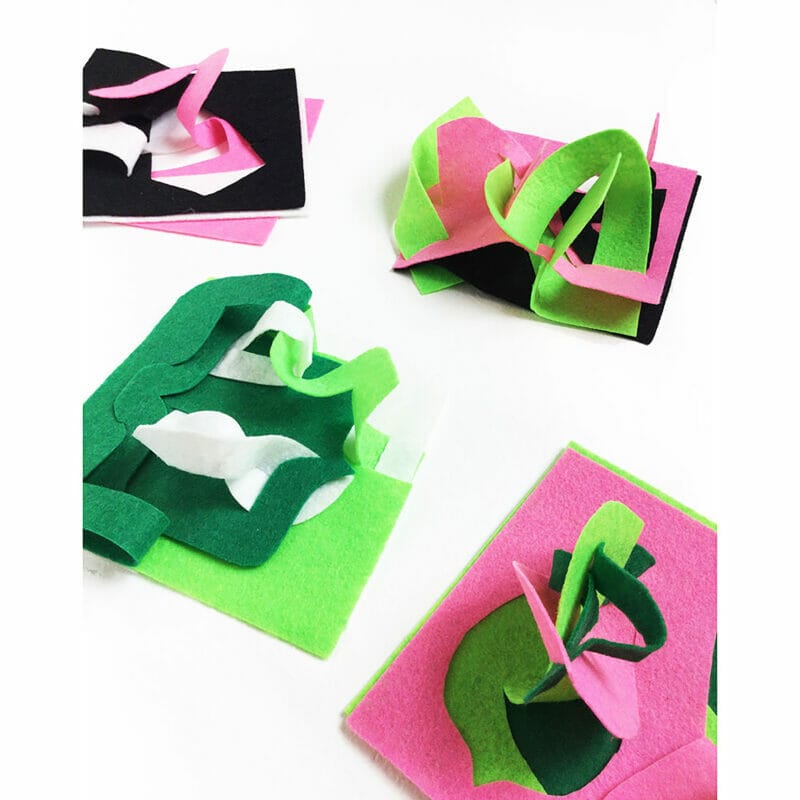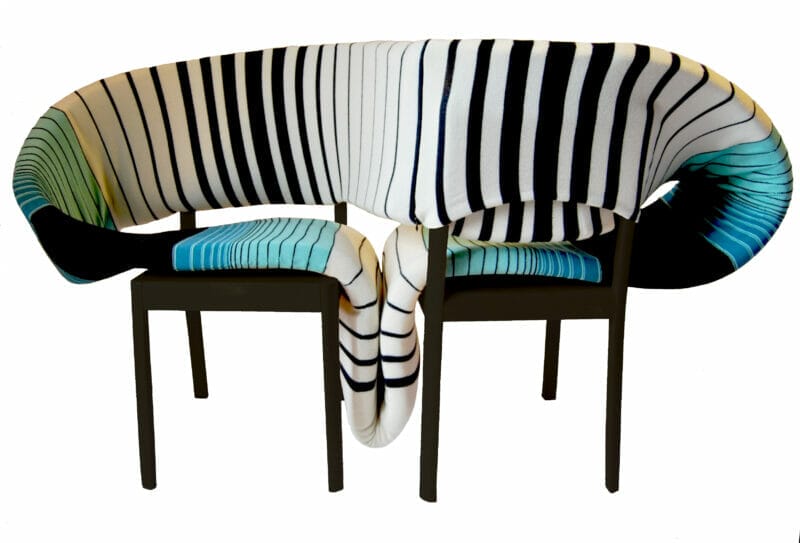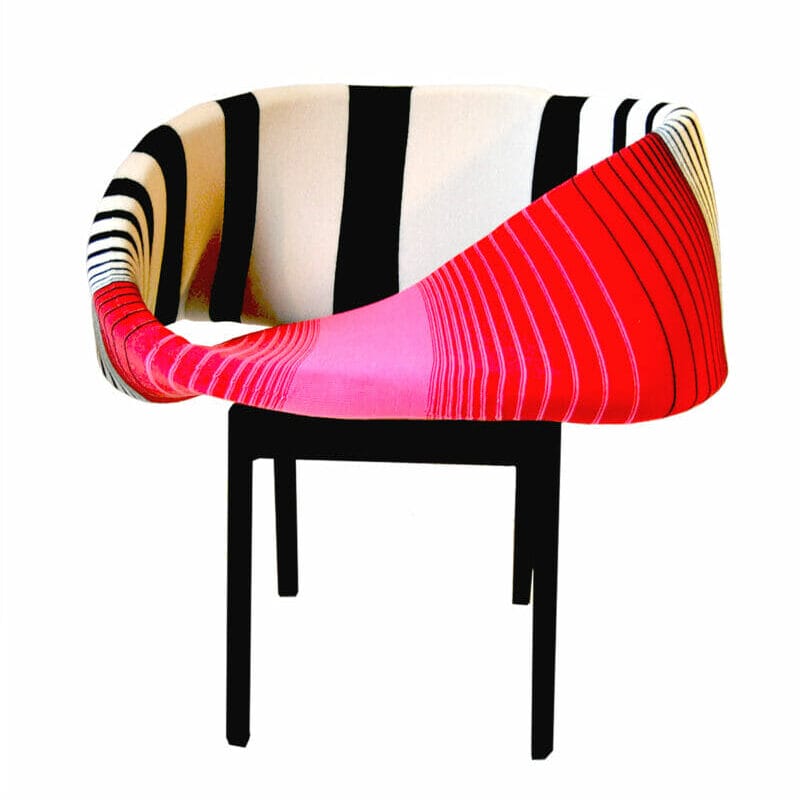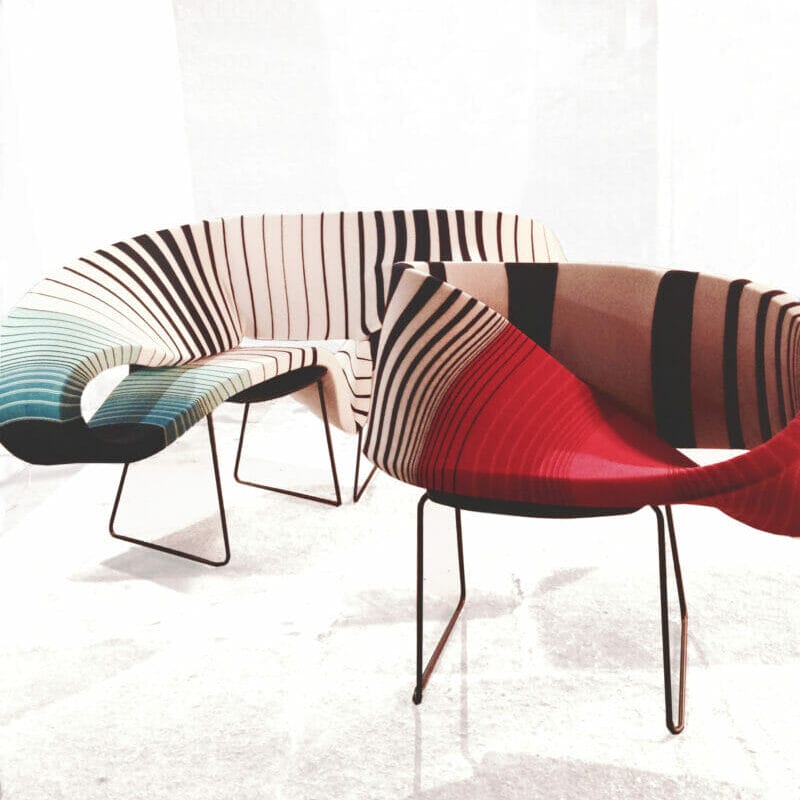Ilze Godlevskis
*Featured photo: Venus, 2022, felt. Textile joinery, 250cm x 250cm x 55cm, copyright Ilze Godlevskis
Ilze Godlevskis, textile artist and designer of Latvian and Canadian descent born in 1980, completed a secondary education in visual arts in Toronto and then, after moving to the UK, completed a degree in Fashion Knitwear at Central Saint Martin’s College of Art & Design in London. In order to broaden and refine her knowledge in the field of knitwear, Godlevskis later moved to Milan, Italy, where she currently lives and works.
Her work has been on exhibition during Salone del Mobile, Design Week in Milan, London Design Week, and Toronto Design Week, along with presence at London and Copenhagen design fairs. She has also been in group shows for contemporary textile art exhibitions such as Rīgas Textile Triennal (Rīga, Latvia), Miniartextil (Como, Italy & Paris, France) and Paratissima,Torino (It).
This year, the artist is present at the 7th Riga International Textile and Fibre Art Triennial with the work Venus, a visual representation of femininity, as she says: “Through my piece I have attempted to visually repress the feeling and energy of femininity separate from the discussion of gender or of what a woman is”.
Godlevskis talks to us about new and interesting aspects of his artistic career in this interview granted on the occasion of the media partnership between the 7th Riga International Textile & Fiber Art Triennal -QUO VADIS- Riga (LV) and ArteMorbida.
What was your training path and what were the most important influences? When and how did you approach textile art?
I would say my textile training was a family inheritance. My grandmother was a textile arts weaver and Latvian ethnographic historian specializing in textiles and national traditional costumes, while my grandfather was a prominent Latvian artist and designer, and my mother passed these skills on to me through sewing clothes and encouraging all forms of arts, craft and design, along with my father who had also been a carpenter in his life always working with his hands to build projects. Seeing all the members of my family creating and producing and living in a house where all the paintings on the walls and most textiles in the house had been created by someone in the family, it was a very natural and inspiring development into who I am now what what I am doing.
As a very small child maybe three or four years old I would sit next to my mother at the sewing machine while she made clothes for my sister and I, and I would watch my father in his garage workshop using electric tools and saws. I loved machinery and started to create on a sewing machine when I was 8 years old.
Originally I was focused on fashion as I wanted to make beautiful things that were useful. Fashion seemed to be an exciting way to express different colour compositions that I liked to combine through clothes. Also being very particular about styles and designs that I liked, I wanted to make my own clothes specifically from my own ideas.
After many years of of making clothes for myself, friends and school fashion shows I wanted to learn more about knitting, as it was the only aspect of fashion design that I was not familiar to me. I liked the idea of a single yarn creating my own complete personal textile creation; an entire process carried out by me. When I learned about the domestic knitting machine in university I wanted to specialize in knitwear for fashion. Creating with manual industrial knitting machines became a strong passion of mine and later brought me to where I work from now in Milan, although now I have shifted from fashion to textile arts and design. Through the years I have been very focused on knitted textiles and I am expanding to incorporate more manual construct to experiment with other fabric structures, such as felt.

What kind of research characterises your production?
The research behind my pieces is very subconscious. I very rarely have a plan of what I am going to make and I also enjoy ‘happy mistakes’ that test my creativity when creating my pieces. Many times I make mistakes in the process of construction or planing or measurements, there is probably not a single piece that I have made that has gone ‘according to plan’, although these ‘errors’ in construction have always made my pieces better than what I had imagined and more unique. Most of my research comes from a rich imagination and an acute observation of the world around me, I store ideas and images of beauty in my head and they materialize through my art pieces as I work with my hands. Involving all of my sensorial experiences is important for my artistic research and development, beauty is very important to me. If it seems my environment is not aesthetically pleasing I am always able to find uniqueness in irony or the small details that I exaggerate in my imagination transforming them into beauty.
You are of Canadian origin, studied in Toronto, moved first to London to complete your studies and begin a professional career, then to Milan where you have lived and worked for many years. Are there parts of these earlier career chapters that continue to inform or influence your artistic practice?
I would say that my artistic practice is less of a career and more of a lifestyle. I have always made and created and chosen education and specific strategic life choices to facilitate my artistic and creative life. Studying in an arts high school in Canada, and then tenaciously ensuring my acceptance into Central Saint Martin’s College for fashion design, and then moving to Italy knowing that there was an abundance of knitting machines in the country, these were all choices to further my artistic practice. Everything that I have experienced was always towards creating beautiful things with my hands, and where possible using machines.
If I were to say one aspect of my work and life that has remained a constant from my early chapters in life, has always been to create very large ambition projects. I remember making my first dress with my own invented pattern at the age of 8 years old, while creating a fashion show with 20 looks at the age of 19, which later transformed into creating textiles arts with a life size plexiglass bed frame and now where I must personally deliver and set up very large art works across various cities and countries. I like big impactful projects that challenge me and constantly surprise myself with what I am able to create.
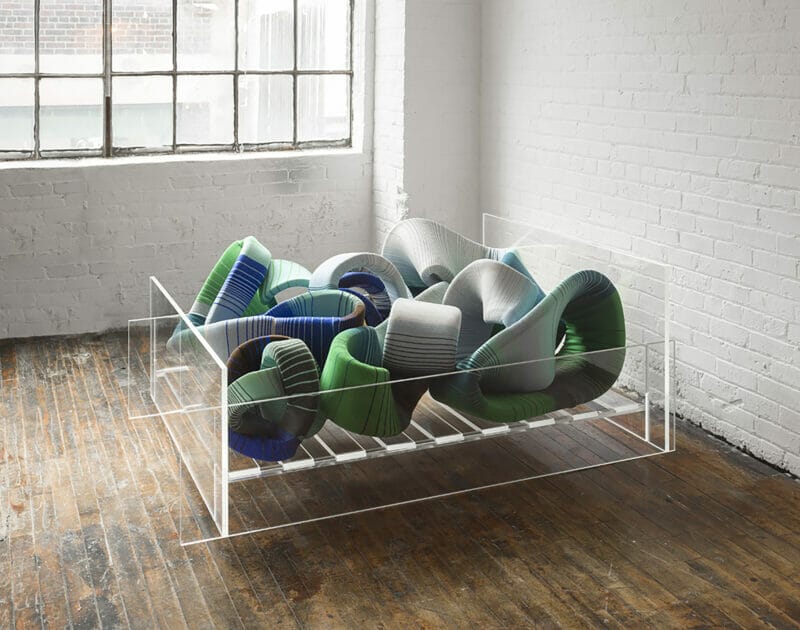
Your work Venus will participate in the 7th Riga International Textile & Fiber Art Triennial 2023. Can you tell us about this work and how you explored the theme “Quo Vadis”?
My work VENUS is a visual representation of femininity. As I did not feel a particular pull in a specific direction, I thought it was important to internally find a compass regarding who I was in the essence of me being female. I think that the concept of feminine is difficult to express and communicate. I believe that we all carry masculine and feminine elements and this are the aspect that allow us to compliment and contrast each other in humanity. Femininity and masculinity carry different energies that we are all able to tap into and use as tools for ourselves and others around us. There is much talk these days about masculinity and how society has formed a patriarchy which has lead us to a point which is no longer sustainable. Aside from needing to temper masculine traits in society, we must also be able to recognize and elevate feminine traits. Femininity has been expressed through visual references of aesthetics and mannerisms, but these still do not capture the natural emotion and power of the feminine. As a society we do not know what femininity ‘looks like’. Through my piece I have attempted to visually repress the feeling and energy of femininity separate from the discussion of gender or of what a woman is. This direction toward understand what my own feeling and study of what femininity is for me creates an internal compass to understand qualities of myself which has been obscured, denied or unseen due to the great emphasis of women emulating male characteristics to be seen as ‘equal’ or to be considered ‘successful’ in society.
I believe that femininity is a part of personal development for both men and women through observation and understanding the unique strengths that we naturally possess we would be more equipped to support each other in our various masculine and feminine expressions.
VENUS was created intuitively with no planning or preparation. I listened to many different perspectives of men and women about their concept of femininity and meditated on my own interior feeling about how I perceived this energy. It was important for this piece to be created without glue or stitched as this seemed invasive and imply permanence, a forced approach to the treatment of the felt material used. I wanted to construct with the natural behaviour of the textiles, that it would hold shape independently with the resilience of the natural characteristics of the fabric. As femininity is effortless in its complex construction, and holds the power of beauty through its strength, I tried to express this in my piece and capture this energy. Having done this research and development into aspects of femininity I now feel that my direction is more natural and clear. I am better able to navigate the power that I possess to create and attract a more peaceful and constructive approach to life and relationships now recognizing and visually referencing my own femininity. My understanding of femininity is still to be explored and understood but at least I have a direction to follow now.
How important is it for an artist to have access to a prestigious event like 7th Riga International Textile & Fiber Art Triennal?
The 7th Riga International Textile & Fiber Art Triennal in Riga is very important for artists as it allows us to meet and exchange ideas, processes and developments with our peers and professional colleagues in the the fibre and textile arts arena. The fact that this triennial takes place in Rīga Latvia is also quite important as the Baltic and Nordic countries of Europe have a rich and profound history in textiles and textile arts. The quality and professionalism to which the jury of this triennial is chosen is extremely impressive and the guest artists have been world renowned, giving more opportunity to fibre and textile artist to generate visibility and recognition in the contemporary arts industry. The care and professionalism of the organizers of this triennial considers every participating artist as a valuable member of the arts community. This generates an extremely high level of competences amongst artists and further evolves our individual creativity while inspiring the audience who are seeing dynamic materials used in imaginative ways. It is a very important meeting point and reference point professionally and personally.
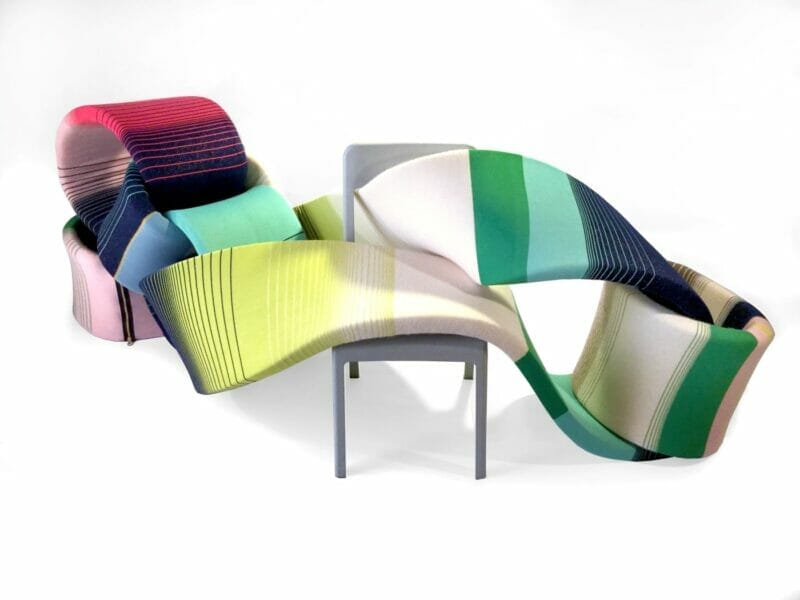
Among the many works/projects you have dedicated yourself to, which is the one you care about the most or that has had the most relevant impact on your professional development?
Each piece that I create at the time is ‘the most important’ for me as they capture the periods of my life in which I created them in a sensorial way. When they are created they are all ‘my babies’. As time passes, my work develops and in retrospect I see what I have done I am still in awe that I have created the individual pieces and most of the time I can not understand how they came to be. For me it is quite a magical process. If I had to choose the most influential piece so far, it would be the current piece VENUS and the piece, Identity Links, I created for the previous Riga International Textile & Fiber Art Triennal. Identity links was also a process of self-discovery, but related to the question of who I am regarding the people and places around my through different moments in my life, which have created who I am and what I identify with. This piece has also seen a greatly appreciated from its audience. It has been requested to participate in other shows along with having been recognized in books and publications, and awarded with acknowledgments in art exhibitions.
The pieces I have created for the Riga’s Triennials hold a very special place in my life as is where my Latvian heritage meets with my contemporary life and I am able to share my cultural, creative and artistic evolution.

What are you working on at the moment?
At the moment I am collaborating with a 3D knitting factory in Amsterdam, on my first digital factory made textile sculpture. This will be combining all of my skills and passions, from my fashion pattern making to my curiosity for machinery. It will be the first time that I will not be making the final product with my hands and focusing on the preparation and strategic construction of the piece. This production method will be very different to my usual way of working and will give me the opportunity to explore the capacity of technology in knit textiles. Although I will not be able to use my intuitive making skills in the final production of the piece, the same creative ‘happy mistakes’ are being made in the preparation phase currently under way.

